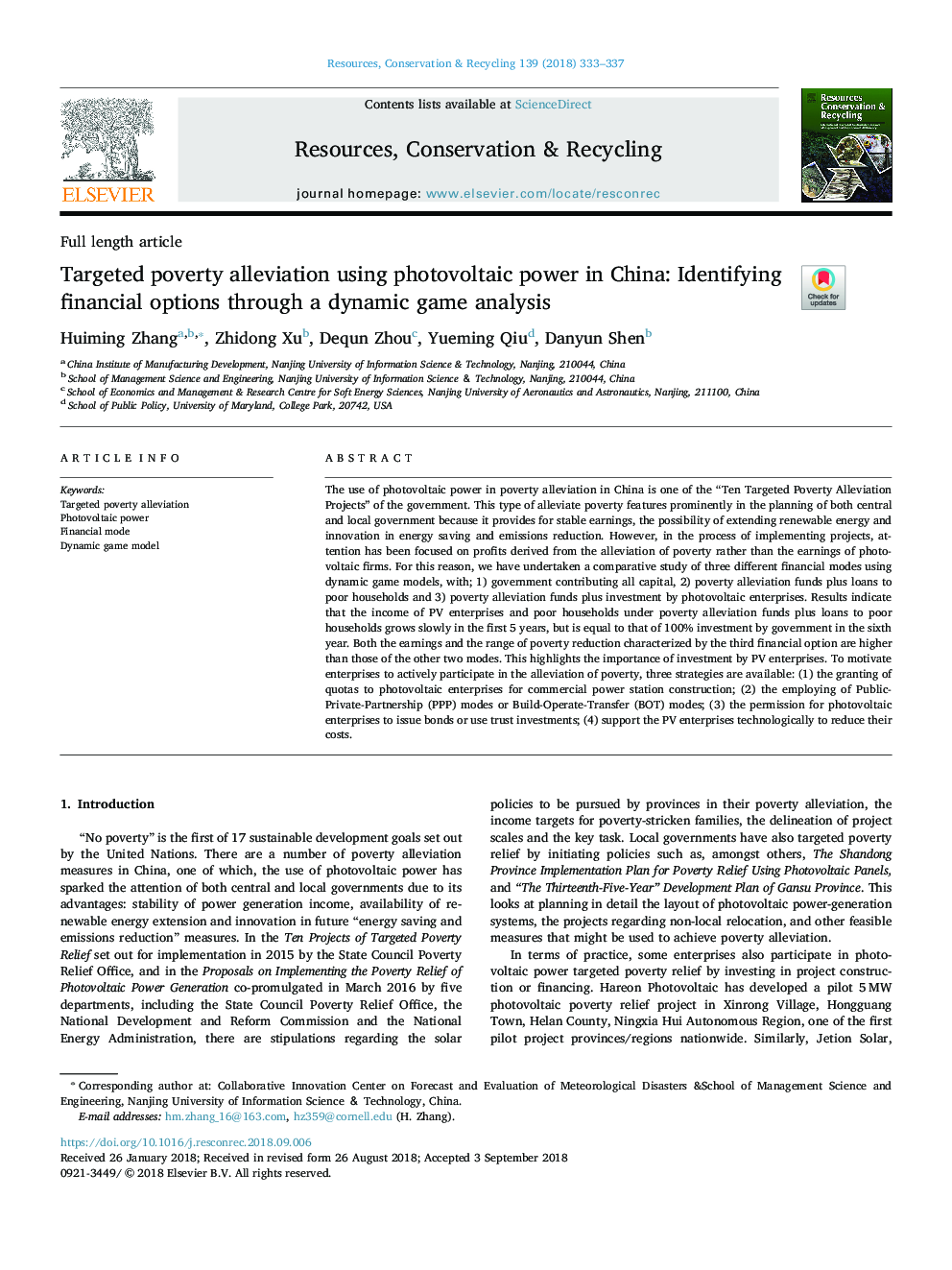| کد مقاله | کد نشریه | سال انتشار | مقاله انگلیسی | نسخه تمام متن |
|---|---|---|---|---|
| 11005416 | 1485653 | 2018 | 5 صفحه PDF | دانلود رایگان |
عنوان انگلیسی مقاله ISI
Targeted poverty alleviation using photovoltaic power in China: Identifying financial options through a dynamic game analysis
ترجمه فارسی عنوان
کاهش فقر هدفمند با استفاده از قدرت فتوولتائیک در چین: شناسایی گزینه های مالی از طریق تجزیه و تحلیل بازی پویا
دانلود مقاله + سفارش ترجمه
دانلود مقاله ISI انگلیسی
رایگان برای ایرانیان
کلمات کلیدی
کاهش فقر هدفمند، قدرت فتوولتائیک، حالت مالی، مدل بازی پویا
موضوعات مرتبط
مهندسی و علوم پایه
مهندسی انرژی
انرژی های تجدید پذیر، توسعه پایدار و محیط زیست
چکیده انگلیسی
The use of photovoltaic power in poverty alleviation in China is one of the “Ten Targeted Poverty Alleviation Projects” of the government. This type of alleviate poverty features prominently in the planning of both central and local government because it provides for stable earnings, the possibility of extending renewable energy and innovation in energy saving and emissions reduction. However, in the process of implementing projects, attention has been focused on profits derived from the alleviation of poverty rather than the earnings of photovoltaic firms. For this reason, we have undertaken a comparative study of three different financial modes using dynamic game models, with; 1) government contributing all capital, 2) poverty alleviation funds plus loans to poor households and 3) poverty alleviation funds plus investment by photovoltaic enterprises. Results indicate that the income of PV enterprises and poor households under poverty alleviation funds plus loans to poor households grows slowly in the first 5 years, but is equal to that of 100% investment by government in the sixth year. Both the earnings and the range of poverty reduction characterized by the third financial option are higher than those of the other two modes. This highlights the importance of investment by PV enterprises. To motivate enterprises to actively participate in the alleviation of poverty, three strategies are available: (1) the granting of quotas to photovoltaic enterprises for commercial power station construction; (2) the employing of Public-Private-Partnership (PPP) modes or Build-Operate-Transfer (BOT) modes; (3) the permission for photovoltaic enterprises to issue bonds or use trust investments; (4) support the PV enterprises technologically to reduce their costs.
ناشر
Database: Elsevier - ScienceDirect (ساینس دایرکت)
Journal: Resources, Conservation and Recycling - Volume 139, December 2018, Pages 333-337
Journal: Resources, Conservation and Recycling - Volume 139, December 2018, Pages 333-337
نویسندگان
Huiming Zhang, Zhidong Xu, Dequn Zhou, Yueming Qiu, Danyun Shen,
